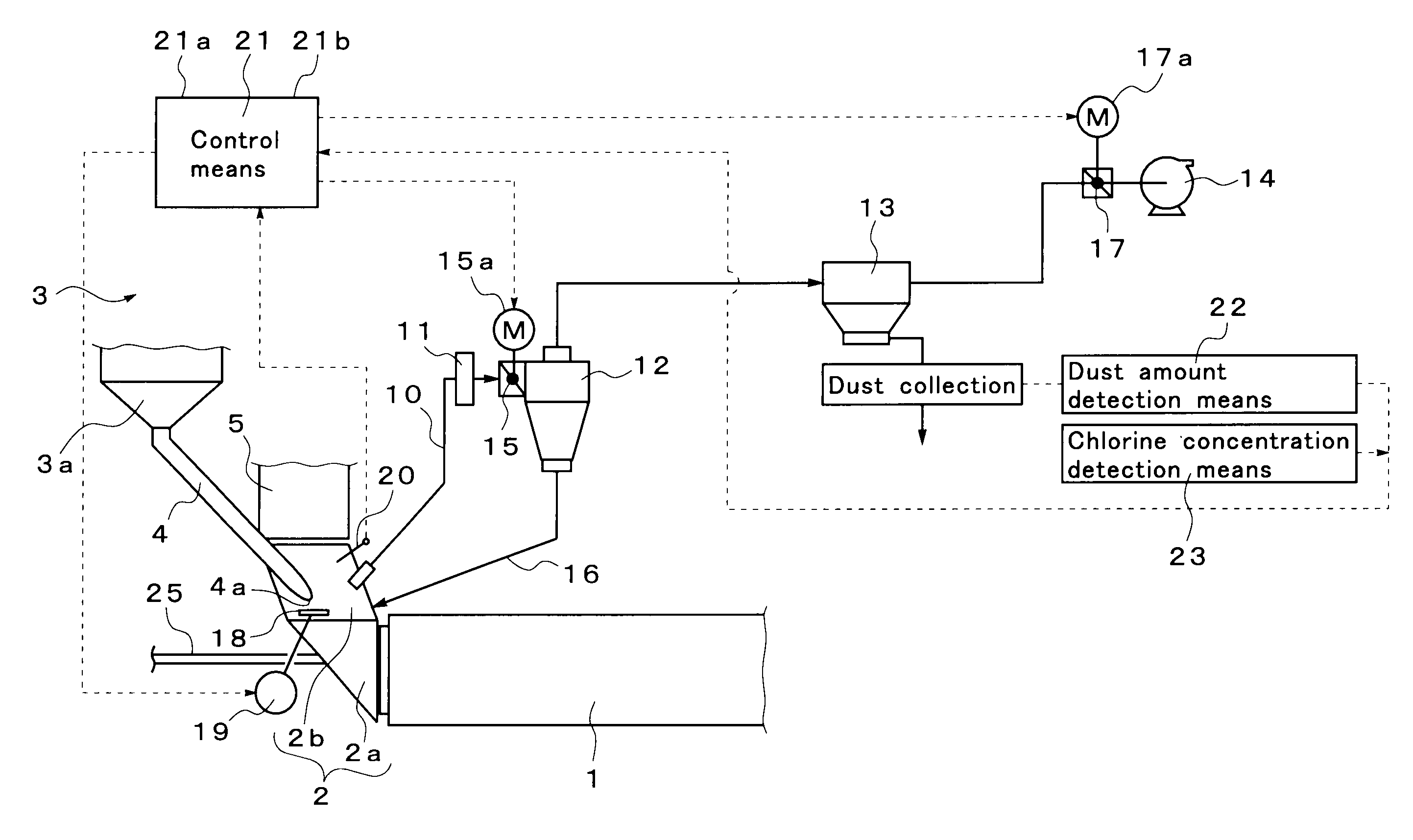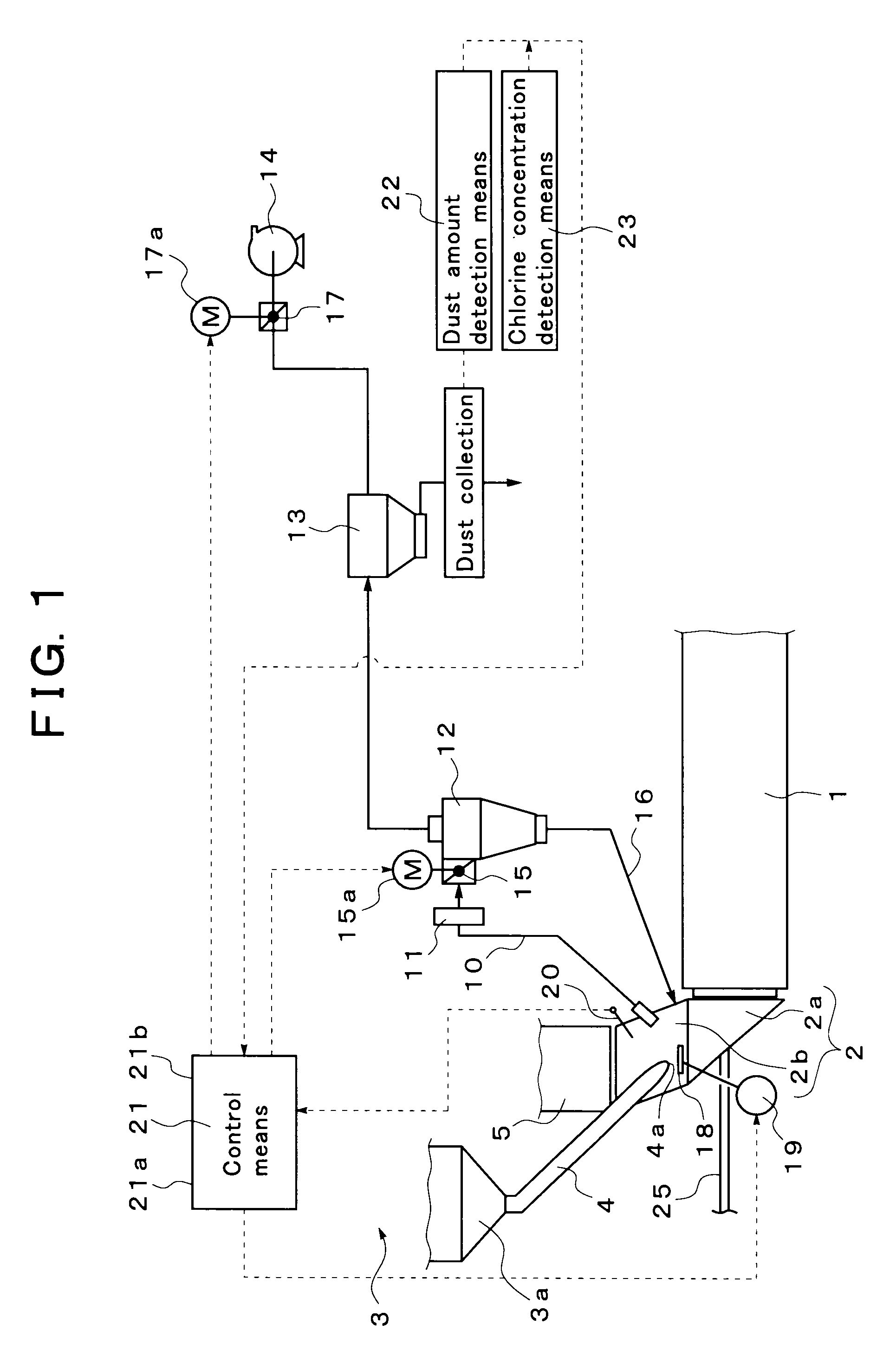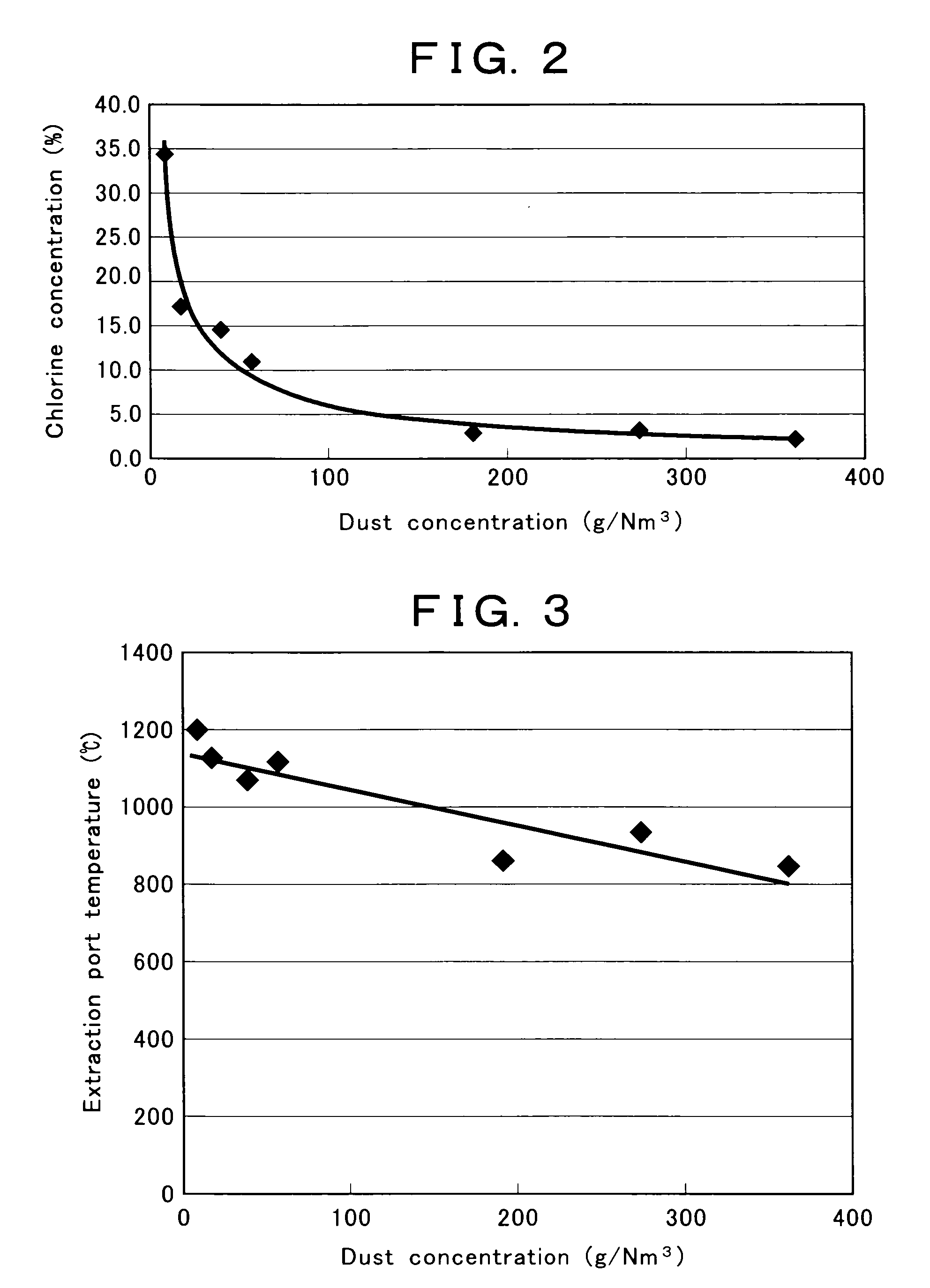Exhaust gas treatment method and system for cement burning facility
a technology of exhaust gas treatment and cement burning facility, which is applied in the direction of auxillary pretreatment, separation process, filtration separation, etc., can solve the problems of blockage and blockage of the facility, and achieve the effect of preventing an increase in chlorine bypass amount, reducing the rate of chlorine particles, and reducing the amount of chlorine bypass
- Summary
- Abstract
- Description
- Claims
- Application Information
AI Technical Summary
Benefits of technology
Problems solved by technology
Method used
Image
Examples
Embodiment Construction
[0069]FIG. 1 shows an embodiment of an exhaust gas treatment system for a cement burning facility according to the present invention.
[0070]First, a cement manufacturing facility in which the exhaust gas treatment system is installed will be described. Reference numeral 1 in FIG. 1 denotes a cement kiln configured to burn a cement material. The cement kiln 1 is a rotary kiln configured so as to be axially rotatable. In the left end part of the figure, a kiln inlet part 2 is provided which includes a kiln inlet part housing 2a supporting the rotary portion, and a rising part 2b of the kiln inlet part housing.
[0071]Furthermore, a preheater 3 configured to preheat a cement material is provided on the upper stage side of the kiln inlet part 2. A main burner configured to heat the inside of the kiln is provided in a kiln outlet part (not shown in the drawings) located in the right of the figure.
[0072]Here, the preheater 3 is composed of a plurality of stages (for example, four stages) of ...
PUM
| Property | Measurement | Unit |
|---|---|---|
| particle size | aaaaa | aaaaa |
| particle size | aaaaa | aaaaa |
| temperature | aaaaa | aaaaa |
Abstract
Description
Claims
Application Information
 Login to View More
Login to View More - R&D
- Intellectual Property
- Life Sciences
- Materials
- Tech Scout
- Unparalleled Data Quality
- Higher Quality Content
- 60% Fewer Hallucinations
Browse by: Latest US Patents, China's latest patents, Technical Efficacy Thesaurus, Application Domain, Technology Topic, Popular Technical Reports.
© 2025 PatSnap. All rights reserved.Legal|Privacy policy|Modern Slavery Act Transparency Statement|Sitemap|About US| Contact US: help@patsnap.com



